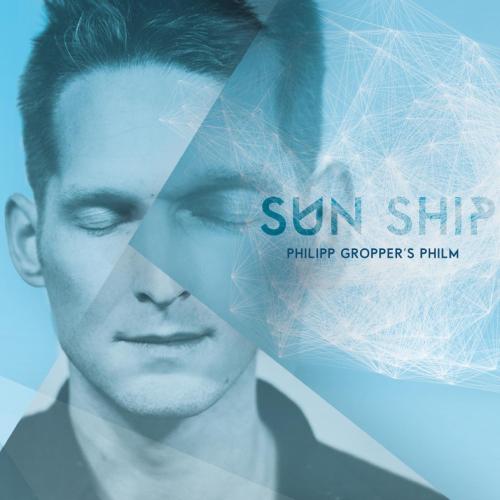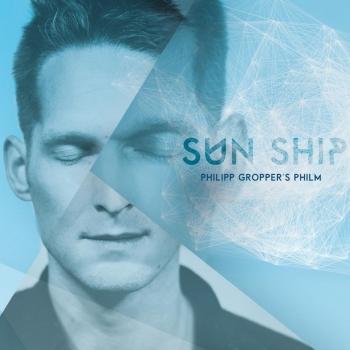
Sun Ship Philipp Gropper’s Philm
Album info
Album-Release:
2017
HRA-Release:
26.05.2017
Album including Album cover
- 1 Sun Ship, Pt. 1 08:00
- 2 Sun Ship, Pt. 2 05:16
- 3 J, Pt. 1 07:47
- 4 J, Pt. 2 03:30
- 5 J, Pt. 3 04:19
- 6 Who Owns the World?, Pt. 1 07:34
- 7 Who Owns the World?, Pt. 2 04:32
- 8 Who Owns the World?, Pt. 3 04:28
Info for Sun Ship
Ultimately, Philm use Gropper’s themes as a way of goading the jazz language to its limits. All four band members are highly sensitised, lashed to a convoluted framework, but frequently escaping into the unpredictable dark corners of improvisation.
Philm has evolved quite rapidly, over a relatively short time period, after coming together in 2012. Philm’s third album is Sun Ship, named after the John Coltrane composition from 1965, but opening with an original work that shares the same title. Tenor saxophonist Philipp Gropper has composed all three of the album’s pieces, each of which is divided up into two or three thematic sections. Gropper owns up to the Coltrane Sun Ship album being amongst his favourite jazz recordings, but he also has another reason for echoing the title, inspired by his brother’s first comment upon hearing the music, describing the impression of ‘a spaceship, launched on a secret mission, navigated from far away’.
Indeed, this music is exceptionally well-navigated.
In sympathy, Gropper creates a tension that strains against this anxious stick-work, issuing surprisingly soft tones, cool and reclined as he ladles tenor progressions across the disjointed rhythms.
Besides the onrushing linear flow, Philm make massive use of divergent rhythmic cells, sometimes ramming directly, at others criss-crossing to provoke a third momentum. It’s an exciting war between the cerebral beat-space and the gutsy, full-tilt hurtle.
Ultimately, Philm use Gropper’s themes as a way of goading the jazz language to its limits, whilst still retaining the structure and style of the classic quartet line-up. All four band members are highly sensitised, lashed to a convoluted framework, but frequently escaping into the unpredictable dark corners of improvisation. Gropper’s compositions are descended from the approach of New York saxophonist and composer Tim Berne, and the school of players that grew up being influenced by him, but as with so many such artists, these tactics are only the starting point for a deeply involved individualist expression.
Philipp Gropper, tenor saxophone
Elias Stemeseder, piano, synthesizer
Andreas Lang, bass
Oliver Steidle, drums
Philipp Gropper’s Philm
Philm has evolved quite rapidly, over a relatively short time period, after coming together in 2012.
Most of its compositions possess a savage, careening precision, a targeted attack that sounds simultaneously untamed and exact. Angular tenor solos writhe in-between the legs of Gropper’s compositional structures, Stemeseder’s piano spiking and rolling, Steidle’s drums stuttering their rapid fire. There’s a cranky, clockwork procession, a lolloping, drunken pugilism, fists flailing, loaded with a fierce energy. The stream of themes usually have ongoing solos riding their backs, creating a sprung urgency, almost mechanoid in its persistence. A minority of the pieces are slower, more spacious and reflective. Here, there are sudden spiky outbursts, against a field of near silence.
Indeed, this music is exceptionally well-navigated. Again and again, Gropper creates a tension that strains against this anxious stick-work, issuing surprisingly soft tones, cool and reclined as he ladles tenor progressions across the disjointed rhythms.
Besides the onrushing linear flow, Philm make massive use of divergent rhythmic cells, sometimes ramming directly, at others criss-crossing to provoke a third momentum. It’s an exciting war between the cerebral beat-space and the gutsy, full-tilt hurtle.
Ultimately, Philm use Gropper’s themes as a way of goading the jazz language to its limits, whilst still retaining the structure and style of the classic quartet line-up. All four band members are highly sensitised, lashed to a convoluted framework, but frequently escaping into the unpredictable dark corners of improvisation.
This album contains no booklet.










